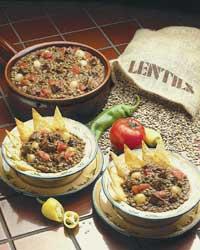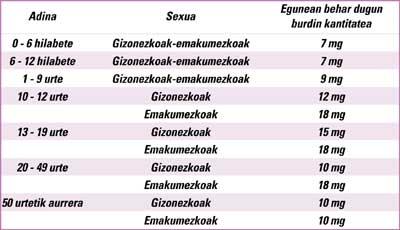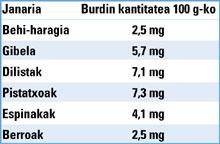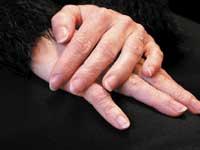Iron Iron

Iron is mainly known as a component of hemoglobin in blood. As a component of red blood cells, it is responsible for capturing oxygen from the lungs and distributing it to tissues throughout the body. On the return trip it carries carbon dioxide to the lungs for expulsion. But iron is also part of many enzymes involved in multiple metabolic reactions. For example, myoglobin responsible for storing oxygen in the muscles. This oxygen comes out when needs increase.
For its fundamental role, it is very important to take enough iron with food. A few milligrams per day are sufficient, between 7 and 20 per age and sex. Women are the ones who need the most iron, especially in the fertile years of life, due to menstruation. Also during pregnancy and breastfeeding, iron needs should be carefully taken care of. Men, for their part, need the greatest amount of iron when it comes to growing.
When taking foods containing iron, it should be taken into account that the body does not absorb the same amount, either of one type or another. Iron is usually present in food in two ways: if it is a heme iron it is well absorbed, but if it is not heme type it is more difficult to absorb because it has to undergo a transformation.
In any case, regardless of the iron of both, these factors facilitate the absorption of iron:
- Vitamin C and, in general, all acids. For example, if before or after eating lentils we eat tomato with vitamin C, peppers or some fruit frog, the body will absorb much more iron. Proteins of animal origin, such as those containing meat and fish.

Others such as calcium salts, phenolic components of tea and coffee, high pH, or high-fiber foods make absorption difficult.
The main sources of heme iron are red meat (cow, veal, ox and especially horse), mussels, clams, seafood, egg yolk and liver. The latter, despite its high iron content, should always be consumed after taking strict measures, and if we have any doubt it is preferable to choose another meal.
They also contain non-heme iron: legumes (lentils, chickpeas, beans and dried beans), nuts (pistachios, pumpkin pipes), green leafy vegetables (spinach – the most prestigious thanks to Popeii -, parsley, chard, borage, berro, lettuce) and cereals enriched with breakfast.

The following table shows the amount of iron contained in these foods:
However, to avoid misunderstandings with the board, we must take into account the amount of food we eat from each one. For example, a normal slice has between 150 and 200 grams and a plate of lentils 70 grams. Therefore, when calculating the calculations, it must also be taken into account.
Nutritional anemias
Anemia is due to the lack of iron, folic acid, or vitamin B12.
Iron-deficiency anemia is the most widespread nutritional deficiency. The highest risk of suffering from this type of anemia is due to the fact that children, due to the speed of the aging process and to the fact that iron deposits can fail without realizing it; adolescents, who in a short time consume enough kilos, increase considerably the needs; women, while they have menstruation and are pregnant; and finally, older people, due to absorption problems and blood losses.
The causes of iron-deficiency anemia can be several:
- Insufficient intake of iron through the diet, for example, vegetarians are in danger. Diseases with inadequate absorption or consumption of certain drugs. Increased needs and lack of measures, such as pregnancy and breastfeeding.
- Suffering significant blood loss from diseases.
When there is not enough iron in our body, the amount of red blood cells in our blood decreases or decreases its size. As a result, there is more difficulty transporting oxygen to all cells. Symptoms include fatigue, dizziness, and paleness. The lack of iron is also seen in other parts of the body: the nails twist and become more fragile.
It is very good to cure, in addition to additives, heme-type foods. It also helps:
- Choose well foods that contain iron. Eat some foods containing vitamin C in all meals: oranges, mandarins, grapefruit, pineapple, strawberries, etc. Eat meat, fish or egg in all meals.
- Do not drink tea or coffee after meals.

Another type of anemia is due to the lack of folic acid, megaloblastic anemia. This causes patients to have the red blood cells needed in their blood, but they are too small and, therefore, do not carry oxygen properly. So-called megaloblastic anemia occurs mainly in older people, due to inadequate feeding or gastrointestinal problems. On the other hand, some medications can cause the lack of folic acid, such as barbiturates, anovulatory, and anticonvulsants. Remember that folic acid has green leafy vegetables, peas, banana, whole grains, avocado, nuts and legumes.
Finally, there is a third type of anemia, known as pernicious anemia. This type of anemia appears if we consume too many foods containing vitamin B12 or cyanocobalamin. As with megaloblastic anemia, changes occur in the red blood cells in the blood, as well as the nerves undergo major changes. To differentiate these two types of anemia well, it should be taken into account that pernicious anemia presents neurological symptoms and not megaloblastic ones. The risk of pernicious anemia is presented by the strict horticultural that never eat animal products. The effects are especially for children, since this vitamin is necessary in the growth process. To avoid this risk, cereals enriched with this vitamin or, in its defect, some additive are very useful. Those who eat everything should know that animal products contain this vitamin.





